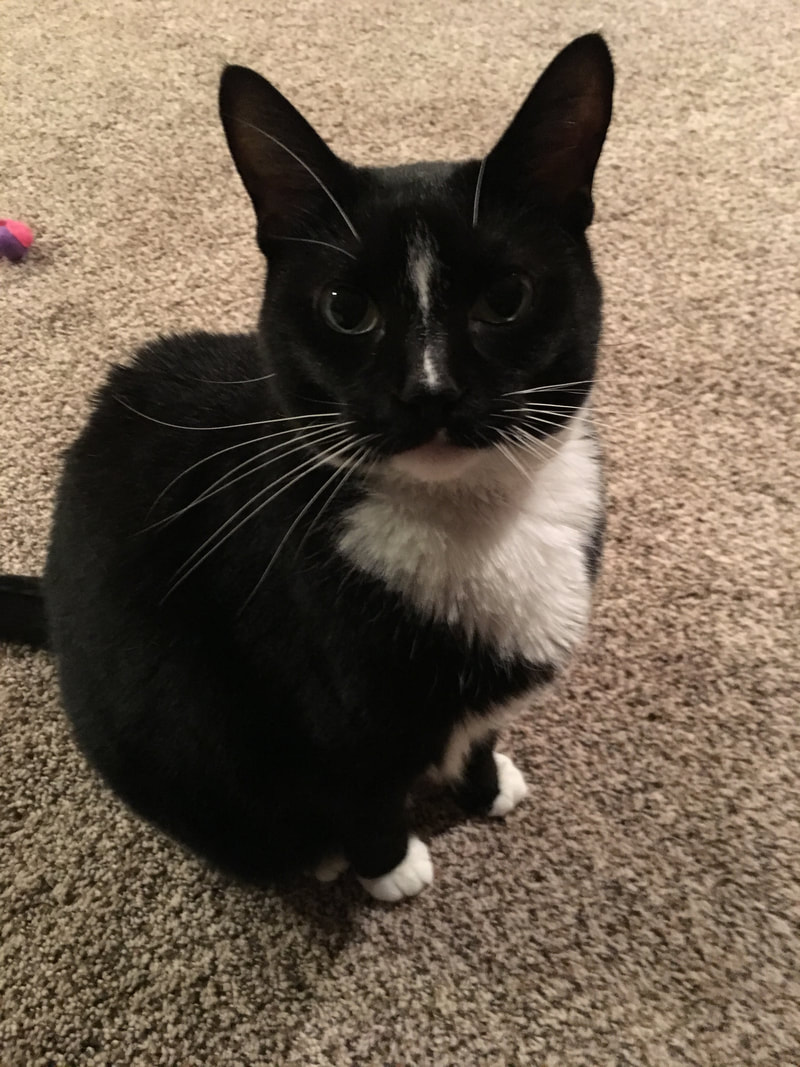How Cat Training Works
People laugh when they first encounter the idea of training a cat. This tells us more about our cultural bias against cats than it does about the trainability of cats themselves. In fact, training a cat is much like training a dog except that cats are much less tolerant of aversive training methods. Trained cats have long appeared in circus acts and on stage and in movies, accomplishing amazing feats that would rival those performed by the very best dogs. All these show-biz cats are trained using positive-reinforcement techniques.
Regardless, when most people talk about "cat training", they aren't really concerned with circus tricks. Rather, they are seeking a solution to some sort of unwanted behavior their cat is exhibiting. The idea that cats are "untrainable" is thus a dangerous one because it leaves cat owners in the position of thinking they have no choice but to resort to drastic methods. De-clawing (the amputation of the cats fingertips) is a classic example of just such a drastic measure that could probably have been avoided with a little cat training.
In most cases, solving cat behavior problems is less about training the cat and more about addressing the cat's environment. Most cat behavior problems are really just normal cat behaviors that are occurring in a location or context that an owner finds unacceptable. When the cat is provided with an alternative way to express his nature, the problem goes away. Sometimes there are little, subtle changes that can have a big impact. Other times, a little more effort is needed. Either way, solving a cat behavior problem can be accomplished by contacting Dan and following these steps:
Step One is the behavioral history. Cat behaviors are strongly influenced by environment. Most behavior problems are the result of problem environments. Dan will help you assess the environment and learn to think about things from the perspective of your cat.
Step Two is education. Most owners like to know why their cat is acting inappropriately. Dan can help shed some light on that mystery. If there's a chance your cat is acting up due to a medical problem, Dan is likely to recommend a vet visit at this point. It's amazing how often a behavior problem is caused by an underlying health issue that can go unnoticed at a routine checkup!
Step Three is the behavior plan. Dan will put together a step by step set of instructions for addressing the problem behaviors. This usually involves changes to the environment. Dan will give you a set of suggestions and help you figure out the best way to implement changes so that you AND your cat can both live happily together.
Step Four is follow-through. You must put the plan into action. Dan will follow up with you in the way you find most convenient, typically by phone, text, and email.
Step Five is enjoy the new relationship with your feline friend!
Regardless, when most people talk about "cat training", they aren't really concerned with circus tricks. Rather, they are seeking a solution to some sort of unwanted behavior their cat is exhibiting. The idea that cats are "untrainable" is thus a dangerous one because it leaves cat owners in the position of thinking they have no choice but to resort to drastic methods. De-clawing (the amputation of the cats fingertips) is a classic example of just such a drastic measure that could probably have been avoided with a little cat training.
In most cases, solving cat behavior problems is less about training the cat and more about addressing the cat's environment. Most cat behavior problems are really just normal cat behaviors that are occurring in a location or context that an owner finds unacceptable. When the cat is provided with an alternative way to express his nature, the problem goes away. Sometimes there are little, subtle changes that can have a big impact. Other times, a little more effort is needed. Either way, solving a cat behavior problem can be accomplished by contacting Dan and following these steps:
Step One is the behavioral history. Cat behaviors are strongly influenced by environment. Most behavior problems are the result of problem environments. Dan will help you assess the environment and learn to think about things from the perspective of your cat.
Step Two is education. Most owners like to know why their cat is acting inappropriately. Dan can help shed some light on that mystery. If there's a chance your cat is acting up due to a medical problem, Dan is likely to recommend a vet visit at this point. It's amazing how often a behavior problem is caused by an underlying health issue that can go unnoticed at a routine checkup!
Step Three is the behavior plan. Dan will put together a step by step set of instructions for addressing the problem behaviors. This usually involves changes to the environment. Dan will give you a set of suggestions and help you figure out the best way to implement changes so that you AND your cat can both live happily together.
Step Four is follow-through. You must put the plan into action. Dan will follow up with you in the way you find most convenient, typically by phone, text, and email.
Step Five is enjoy the new relationship with your feline friend!

